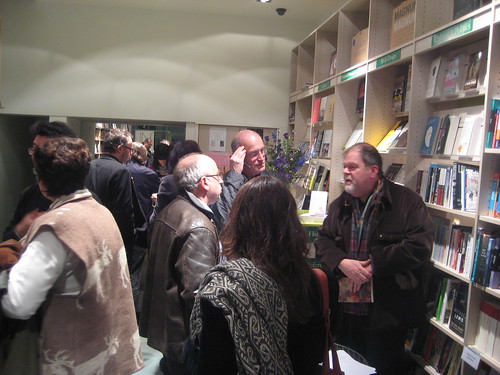"I wonder what history will be dug up or uncovered in the Crossrail construction & will any of it be preserved?"

Apparently where possible "archaeological sites will be preserved in situ; otherwise they will be excavated and recorded" say Crossrail.
The company acknowledge that it has the potential to encounter some really important and interesting archaeology across the route including prehistoric, Roman and Medieval artifacts. But will they go as far as the Athens subway and display what is found in the stations?


The audience in the shop were quite sceptical about this happening, but agreed it would be great to see.
So far some human bones which are 200 to 300 years old were found in an exploratory borehole close to the planned Farringdon Crossrail station on Charterhouse Street. A Crossrail spokesperson said "They probably came from the former burial ground at St Sepulcher’s Church, which had a workhouse attached to it." However, there's little chance they'll be on display at the new London Underground station, as they were tested for bubonic plague. Once tested, they will be re-buried in consecrated ground or kept in the archive of the Museum of London.
London Reconnections wrote that "Anthrax can lie dormant in spore form for centuries, but if disturbed it can spread through the air. When the Metropolitan Line was dug in the mid 19th century, anthrax spores were released, killing several people. The bacteria that causes bubonic plague may also survive, and dealing with ancient remains is an occupational hazard for rail projects in the City."

Interestingly, both Iain and Rachel talked about the massive change Crossrail will bring to the culture of the area, which reminded me of last year's Transformed by Tube talk at the London Transport Museum. In fifty years from now, will we be musing nostalgically, about the little newsagents, bars, shops and KFC outlets, that have been cleared by Crossrail?
I learnt last night that Farringdon Road used to have a daily book market on it (about 20 years ago & evocatively described in Iain's book White Chappell, Scarlet Tracings) and there's clearly no evidence of that now. I was happy to hear that people like Iain & Rachel are still uncovering the history of less famous London streets and long may it continue.
No comments:
Post a Comment